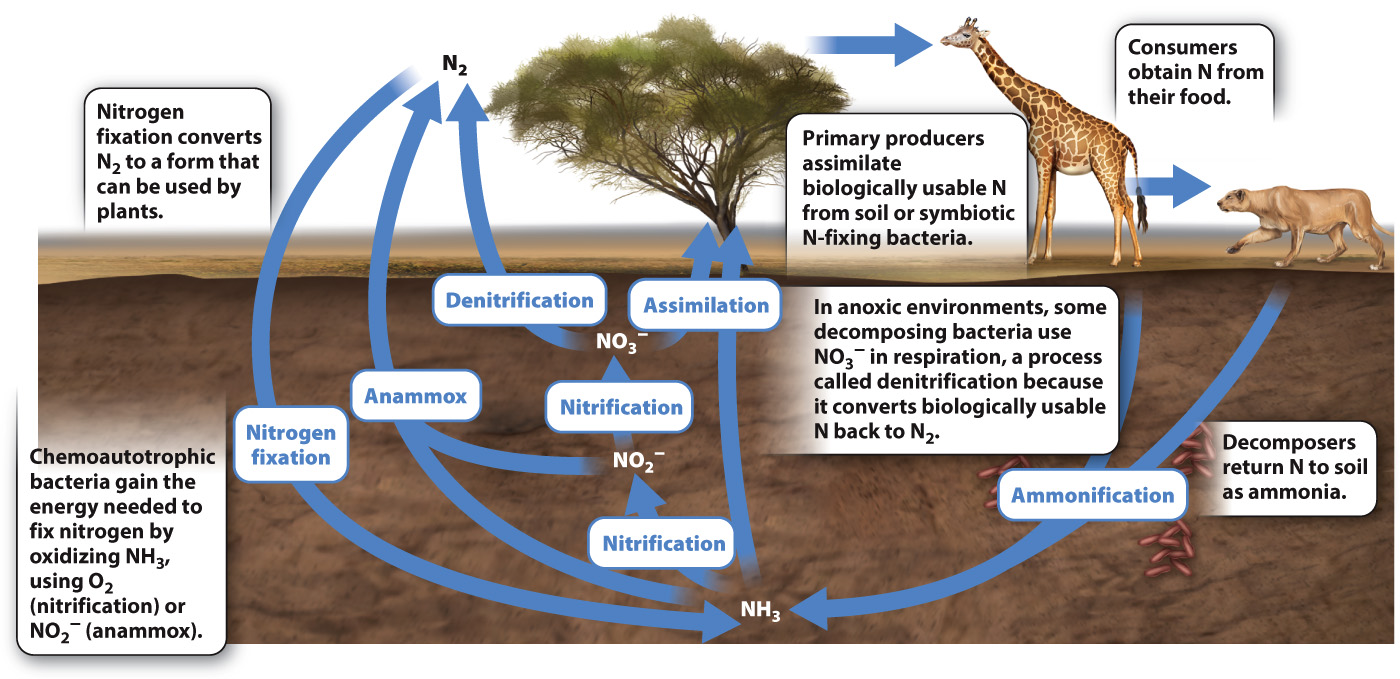The nitrogen cycle also reflects the interplay between ecology and evolution.
Fig. 48.16 illustrates the same terrestrial ecosystem as Fig. 48.15, but now highlights the cycling of nitrogen. The primary producers, consumers, and decomposers linked in the carbon cycle also cycle nitrogen. Indeed, the biological carbon and nitrogen cycles are closely connected by both ecology and metabolism.

Once again, primary producers play a key role, as these are the organisms that can assimilate the biologically usable nitrogen found in soil or water. Primary consumers obtain nitrogen from the primary producers at the same time that they obtain carbon from these organisms, and through consumption both nitrogen and carbon travel through the food web. Decomposers return N2 to the atmosphere by metabolic processes such as denitrification (a form of anaerobic respiration in which nitrate, rather than oxygen, serves as the terminal electron acceptor), nitrification (a chemoautotrophic process that uses energy gained from the oxidation of ammonia or nitrite by oxygen), or anammox (chemoautotrophy, with energy gleaned from the reaction of ammonia and nitrite)—all exclusively microbial processes (Chapter 26).
The nitrogen cycle differs from the carbon cycle in a key way: Most primary producers cannot assimilate nitrogen directly from by far its largest reservoir, N2 in the atmosphere. As introduced in Chapter 26, the biological nitrogen cycle depends critically on nitrogen fixation, the reduction of N2 to biologically useful ammonia by bacteria and archaeons. By extension, then, nitrogen-